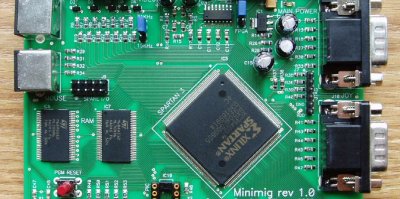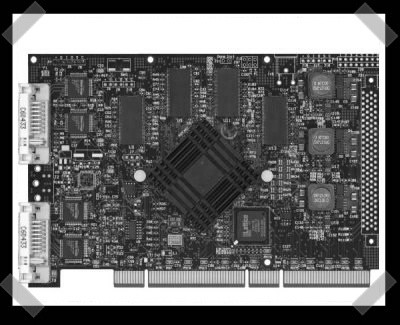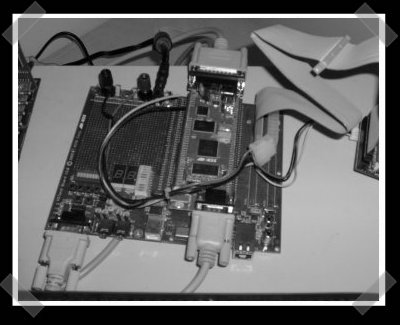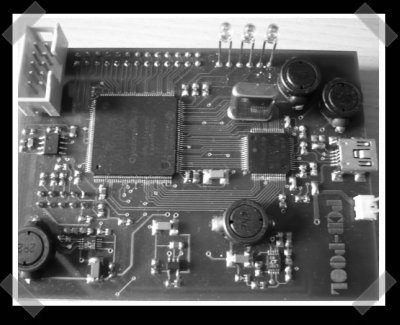
FPGA’s have become especially useful to the hacker community of late. Once upon a time, these lovely pieces of dedicated hardware were fabled to only be within reach of deep pocketed graphics card producers working to up their shader and vertex counts. Today they’re often found in the bowels of high end network gear. As reprogrammable arrays of logic gates, FPGAs represent a happy middle ground between general purpose CPUs and dedicated silicon. After the break, we’ll recount some of the more interesting FPGA projects we’ve seen, like the open source graphics card we featured yesterday.
fpga551 Articles
Open Graphics Card Available For Preorder

The Open Graphics Project has started accepting preorders for their OGD1, a graphics card with a completely open source design. This initial release is billed as a high-end FPGA prototyping kit specifically designed to test computer graphics architectures. The card has two DVI connectors, S-Video, 256MB RAM, and a 64bit PCI-X connector. The core of the system is a Xilinx Spartan-3 XC3S4000 FPGA. A nonvolatile Lattice XP10 FPGA is used to bootstrap the Xilinx at power up. Here’s the layout of the specific components.
An open design like this could prove very beneficial to the free software community. The open hardware makes driver development much easier; binary drivers from traditional graphics manufacturers have been very hard to work with in the past. The OGD1 could also be used with CPU architectures that wouldn’t be unsupported by normal graphics cards. An FPGA based design means that CPU intensive processes like video decoding could be offloaded to the video card without needing a dedicated chip. There is still a lot of work to be done and at $1500 we’re pretty sure most of you won’t be buying the first generation. It’s still exciting to see traditional PC hardware getting reinvented and opened up. Check out the OGD1’s FAQ for more info.
H2O Spectrum Analyser

[Ray] noted that spectrum analyzers have become a favorite project for FPGA evaluators and sent in his groups version from 2004. His team used a combination of MatLab, an Altera FPGA and sixteen pumps to produce real-time sound spectrum output.
FPGAs Rock

I was doing some project window shopping today, and FPGA’s came up on my list. [John Kent] put together a pretty impressive documentation set. He’s written up some of his own projects, some how-to’s and linked plenty of good information for the budding FPGA programmer.
USB 2.0 FPGA Based 24 Channel Logic Analyzer

[lekernel] sent in his USB logic analyzer. I might just have to build this one for my work bench. It’s based on an Altera Cyclone 2 FPGA and he’s provided full schematics, source and a quick and dirty Linux driver to get things going. The board is nearly all surface mount, but he points out that the entire thing was soldered with a standard iron and de-soldering wick. If you’re looking for a good starter FPGA project, this looks like a good one.
I started writing for Hack-A-Day a little over a year ago. I’ve barely taken a break, but for the next week I’m going to be taking some serious time off on a Caribbean island. Thanks for a great year guys! While I’m gone, [fbz] has kindly consented to take over the reins. I’m looking forward to another year when I get back, but right now I’ve got to finish packing my dive gear.










